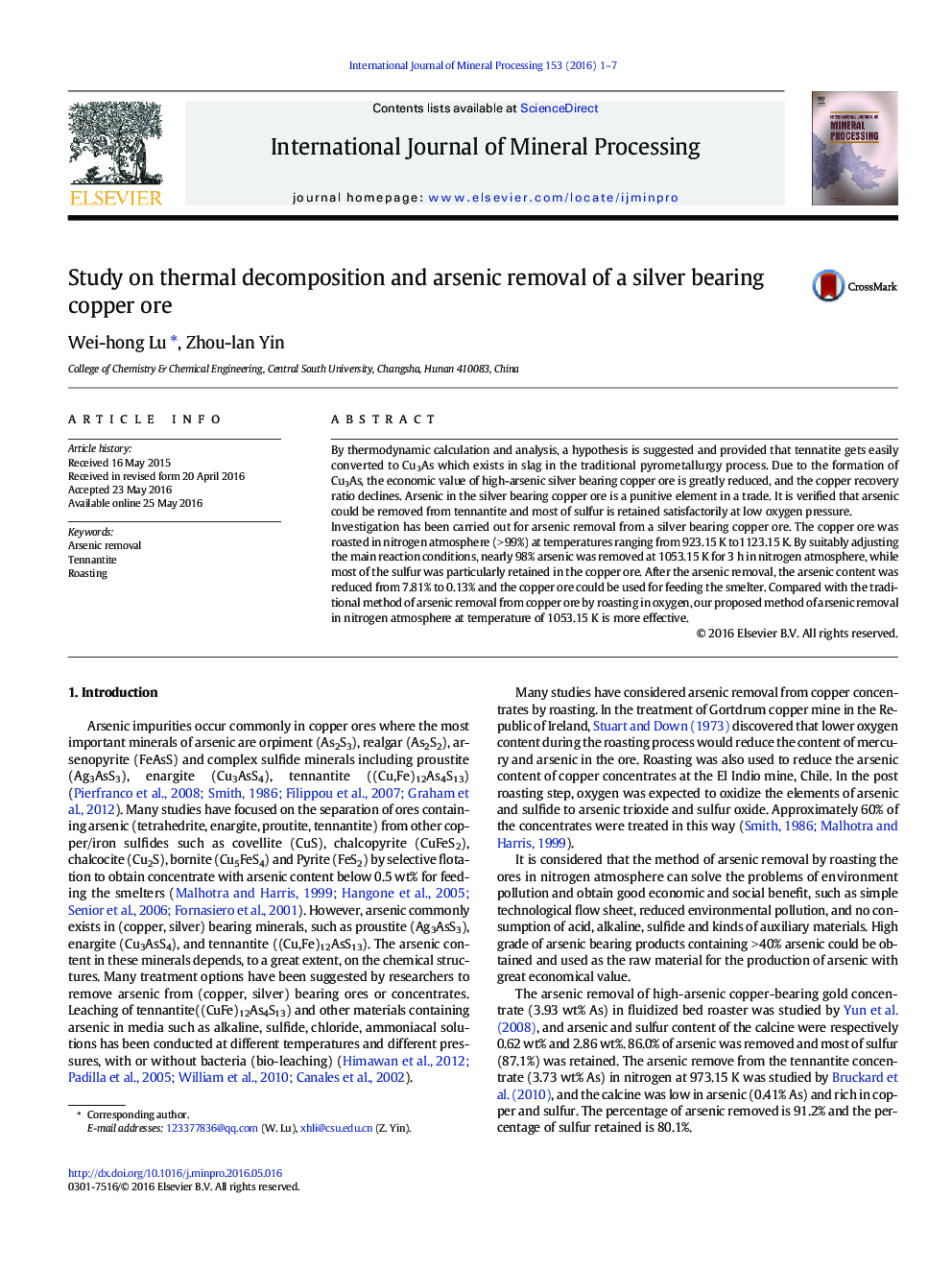| Article ID | Journal | Published Year | Pages | File Type |
|---|---|---|---|---|
| 213687 | International Journal of Mineral Processing | 2016 | 7 Pages |
•to suggest and provide a hypothesis that tennatite gets easily converted to Cu3As•the feasibility of developing a roasting process to remove arsenic•to selectively remove arsenic and to retain particularly sulfur•the method of arsenic removal is effective
By thermodynamic calculation and analysis, a hypothesis is suggested and provided that tennatite gets easily converted to Cu3As which exists in slag in the traditional pyrometallurgy process. Due to the formation of Cu3As, the economic value of high-arsenic silver bearing copper ore is greatly reduced, and the copper recovery ratio declines. Arsenic in the silver bearing copper ore is a punitive element in a trade. It is verified that arsenic could be removed from tennantite and most of sulfur is retained satisfactorily at low oxygen pressure.Investigation has been carried out for arsenic removal from a silver bearing copper ore. The copper ore was roasted in nitrogen atmosphere (> 99%) at temperatures ranging from 923.15 K to1123.15 K. By suitably adjusting the main reaction conditions, nearly 98% arsenic was removed at 1053.15 K for 3 h in nitrogen atmosphere, while most of the sulfur was particularly retained in the copper ore. After the arsenic removal, the arsenic content was reduced from 7.81% to 0.13% and the copper ore could be used for feeding the smelter. Compared with the traditional method of arsenic removal from copper ore by roasting in oxygen, our proposed method of arsenic removal in nitrogen atmosphere at temperature of 1053.15 K is more effective.
